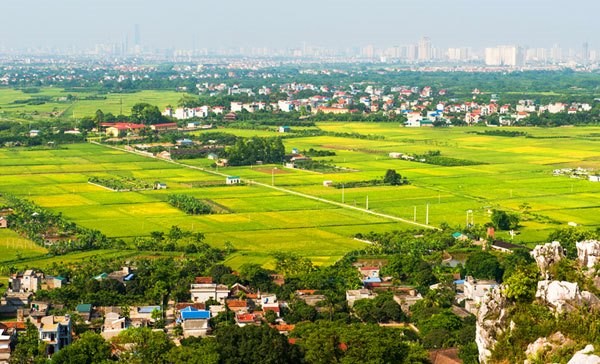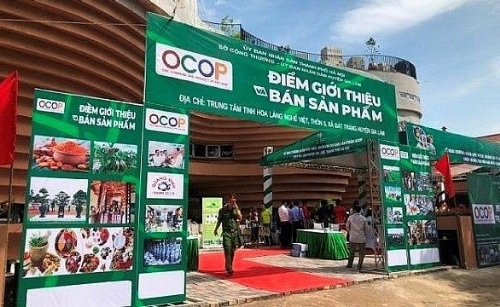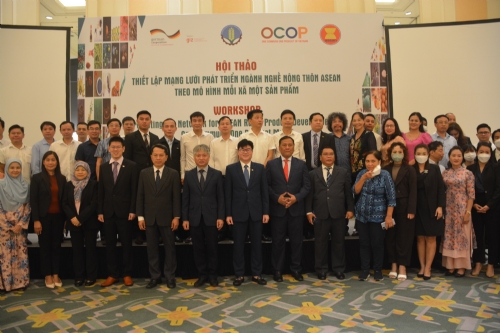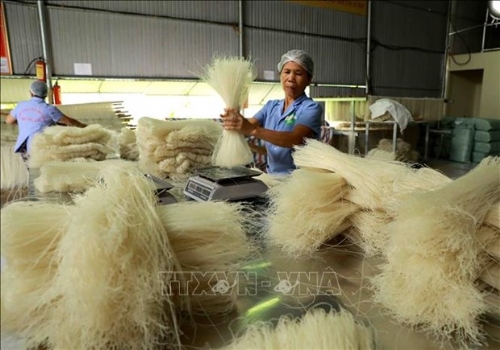Rural Urbanization
Wednesday, August 12, 2020 13:36

Currently, many localities in Vietnam are experiencing rapid urbanization, so the new rural development associated with the process of urbanization is an indispensable trend. This is also a new requirement for the National Target Program on New Rural Development.
Strong new rural development
After nearly 10 years of implementation, the National Target Program on New Rural Development has achieved positive and comprehensive results. By June 2020, the whole country has 5,177 communes (58.2%) recognized as new-style rural areas, an increase of 371 communes compared to the end of 2019. There are nine provinces and cities with 100% of communes recognized as reaching new rural area standards. 127 out of 664 district units in 45 provinces and cities have been qualified for new rural area standards, accounting for about 19.1%.
Many essential infrastructures in transportation, irrigation, culture, health care and education have been upgraded and newly built. There is great improvement in farmers’ lives. Cultural, spiritual life, social order and environmental safety are guaranteed. The political system at the grassroots level has been strengthened, which is a decisive factor for the successful implementation of new rural area construction.
At the meeting of the Central Steering Committee for the implementation of the new style rural area building program, Deputy Prime Minister Trinh Dinh Dung emphasized: "New rural area building has really been a new wind, becoming a strong and widespread movement throughout the country, supported by the political system and the people."
Rural development must be in close connection with the process of urbanization, industrialization and modernization. These issues are inseparable. Urban development plays a role of supporting rural areas and supporting industries for agriculture and farmers. Urban and industrial development help create more jobs and change labor structure. Industrial development helps to increase revenue quickly, thereby enabling investment in agriculture and rural areas. In the opposite direction, the development of agricultural and production areas will support the development of industries and services in urban areas.
"We should not let building new rural areas become formalistic, focusing only on the criteria of electricity, roads, schools, stations. It is crucial to take economic development as a driver to change rural life. In which, we should promote the motive role of cooperatives and enterprises, develop the labor force, production and consumption markets," said Deputy Prime Minister Trinh Dinh Dung.
Large-scale and sustainable agriculture
Building new rural areas is associated with urbanization, so in agricultural production, localities are oriented to develop agricultural production in the direction of large and sustainable commodity scale. Accordingly, localities are interested in attracting investment in large field projects, a chain of links from production to consumption.
Hanoi has many high-tech agricultural production models. According to the Hanoi Department of Agriculture and Rural Development, the city has 164 high-tech agricultural application models (up 29 models compared to 2019) in Me Linh, Gia Lam, Thuong Tin and Ung Hoa districts. These models are small, but very efficient, accounting for 25% of the total value of agricultural production.
In addition, land accumulation has facilitated the formation of large-scale concentrated agricultural production areas. Notably, the city has converted more than 40,227 hectares of land into production models, including higher quality rice cultivation area of 15,600 ha, fruit trees area of nearly 7,400 ha, safe vegetables area of nearly 3,000 ha, breeding area far from residence areas of over 700 ha, and aquaculture area of 6,900 ha. These are important results to create momentum for Hanoi to form six efficient concentrated agricultural production areas.
In addition to encouraging the production of high-tech applications, Hanoi City is also promoting the implementation of linkage models in agricultural production. Up to now, Hanoi has 139 linked models in agricultural production, of which Ung Hoa district has 24 models, Gia Lam 22 models, and Dong Anh 14 models. Those models have created positive changes, helping people develop sustainable production, ensuring output for agricultural products and creating branded agricultural products.
In the 2020-2025 period, the city strives to build a comprehensive and sustainable agriculture towards modernization, sustainability, large-scale commodity production model with high quality, efficiency and competitiveness, ensuring food security. Accordingly, Hanoi will continue to support businesses and people to accumulate land, invest in production, thereby forming concentrated, specialized agricultural production areas to meet the needs of processing.
Mr. Chu Phu My, Director of the Hanoi Department of Agriculture and Rural Development, said that in the coming time, the Department will continue to review mechanisms and policies, thereby developing, supplementing and completing policies for the concentrated agricultural production area, especially policies to support investment in infrastructure, production linkages along the value chain, mechanization and automation applications in production. Hanoi will strengthen market forecasting and proactively respond to climate change, preventing natural disasters and epidemics to protect agricultural production.

 THE PROGRAM COOPERATED WITH CENTRAL COORDINATION FOR NEW-STYLE RURAL DEVELOPMENT
THE PROGRAM COOPERATED WITH CENTRAL COORDINATION FOR NEW-STYLE RURAL DEVELOPMENT
Other news
- HANOI: Promoting the consumption of craft village products and developing community tourism(11/5/2022 3:16:04 PM)
- Chuong My: Effectiveness from the One Commune One Product Program(11/3/2022 10:04:10 AM)
- Thanh Hoa develops OCOP products(11/1/2022 1:30:31 PM)
- Promoting the network for Asia Rural Product Development on one commune one product(8/30/2022 9:43:23 AM)
- Phu Tho eyes 56 new 3-star OCOP products for 2022(8/23/2022 3:09:56 PM)
- Opening of the OCOP product introduction week in Hanoi in 2022 in Phuc Tho district(8/1/2022 3:28:38 PM)
- Evaluation and classification of OCOP products Hoan Kiem District in 2022(7/27/2022 10:10:23 AM)
- Hanoi turns to green, sustainable agricultural sector(6/28/2022 4:10:22 PM)
- OCOP Forum in the Mekong Delta - Dong Thap 2022: Opening up great opportunities for regional products.(5/4/2022 2:38:13 PM)
- Over 1,000 spice products on display in Ho Chi Minh City(4/29/2022 2:34:02 PM)
The featured news
-
HANOI: Promoting the consumption of craft village products and developing community tourism
-
Promoting the network for Asia Rural Product Development on one commune one product
-
Phu Tho eyes 56 new 3-star OCOP products for 2022
-
Opening of the OCOP product introduction week in Hanoi in 2022 in Phuc Tho district
-
Evaluation and classification of OCOP products Hoan Kiem District in 2022






